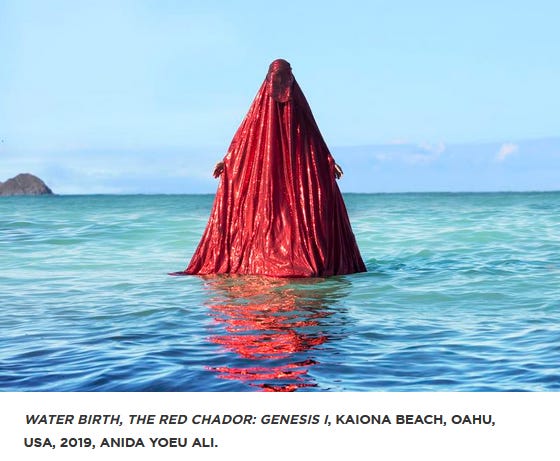Museums vs. Art
And a P.S. about the devolution of culture
I know you’ve all heard it asked, or asked, yourselves, “What is Art?” (capital “A”). And truth is, there’s no one answer. But one answer at least in more recent human history is that Art can be an instigator of or inspiration for change.
I struggle with this aspiration for Art because “Art” has such limited reach; mostly it’s very educated and especially richer people who have access to and see and consume “Art”. And what’s more, even among highly educated and financially better-off people, a minority of them actually like and regularly visit art museums. And when they do, they often are there to see old works, art that has been approved by the “taste makers” of the art world.
Don’t get me wrong, I am clearly an appreciator of art and I like and enjoy going to art museums to see art both old and new. But this vision of Art as change maker has seemed…more aspirational than real.
I recently came across some validation for this view from actual professional Artists (I’m giving them a capital “A”) who articulated the conundrum of exhibiting in museums, where the audience is limited and the political pressures stifle expression, but which do provide a platform for reaching more people than they otherwise would.
First, I recently visited the Seattle Asian Art Museum, where Anida Yoeu Ali is exhibiting. It’s a great exhibit, I recommend going. In one of the rooms of her exhibit, she talks about her experience putting on a live installation/performance on the National Mall in DC, and how the Smithsonian put a lot of limitations in what she was allowed to do in their contract with her, to tamp down on risks that people might be offended. (This is a simplification, but her eventual installation/performance combined lots of patriotic Americana with her in her red chador, a commentary on who gets to be viewed positively as “American”.)
I really appreciated seeing her commentary about her challenge working with Smithsonian since it raised for me some of the dynamics of the trade-offs of exhibiting in a museum vs. trying to do things independently.
This is analogous to other creative disciplines and their respective gatekeepers, like writers/graphic novelists/comics creators vs. publishers, or stage actors/set creators/writers vs. theaters, or screen actors/directors/writers/editors/etc. vs. TV and movie studios, etc.
And then just a few days later, I read this interview with Ai WeiWei about his new graphic memoir. The aforementioned dynamic with museums came up in that conversation, too, which I’ve quoted below:
The rabbit represents immortality and art. With the time you have left will you, like the German artist Joseph Beuys, who is featured in “Zodiac,” plant trees that thrive outdoors in open, public spaces, for all to see, or will you continue to show indoors, at museums that charge admission and are subject to political pressures?
For artists today, there are so many possibilities to not repeat this old game, which has lost interest and doesn’t connect with our human experience any more. I used galleries, museums and art fairs only because I saw them as ready-made. They’re just platforms, but absolutely not necessary.
Ai sees there as being many more avenues for artists to get their work out now compared to before. There certainly are more ways to self-publish and we’re all connected digitally in more ways and have much more geographic reach than before. But of course, if we all have bigger mics now, it’s also harder to hear any individual voice in the cacophony of everyone’s collective shouting.
P.S.
Speaking of that last point, in this post of mine a couple weeks back, I noted skepticism about Ted Gioia’s points about how good things are for individual creators (“microculture”, as he writes about). Gioia’s latest post shifts off of triumphalism about the collapse of macroculture and the rise of microculture to discuss instead how there’s an ongoing evolution—or maybe rather a devolution—devaluing art and culture to entertainment, which has shifted to “distraction”, and is now distilling to “addiction”. It’s all about maximizing the companies’ profit and growth. You can certainly see this evolution in how social media platforms do all they can to keep eyeballs within their platforms, and how the way music streaming is structured has pushed artists to creator shorter and shorter songs.
Kyle Chayka sums up the trade-off in these trends well in this NPR interview:
So I think there are advantages and disadvantages to both of these kinds of regimes. Like, on the internet, anyone can put out their work and anyone can get heard. But that means to succeed, you also have to placate or adapt to these algorithmic ecosystems that, I think, don't always let the most interesting work get heard or seen.
Lots of great points from Chayka summed up in that NPR piece.




